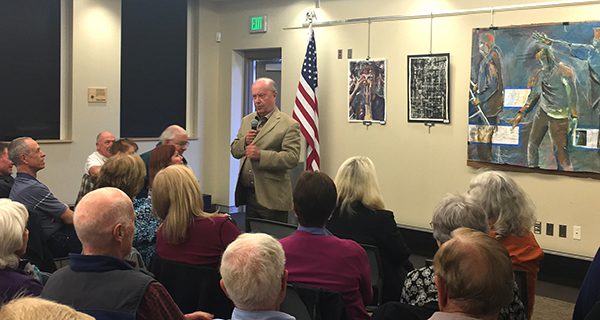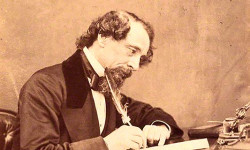[ccfic caption-text format="plaintext"]
By Katrina Margolis
Hometown Weekly Reporter
Gary Hylander is a lecturer of all trades. His topics range from John F. Kennedy to Edith Wharton’s “House of Mirth” to Lincoln and the election of 1860. Most recently, Hylander made a stop in Walpole to speak about the sinking of the Lusitania.
This year marks the 102nd anniversary of the sinking of the ship, one of the most luxurious and impressive passenger liners ever built. Much as the Titanic claimed it was the unsinkable ship, the Lusitania’s captain, Charles Turner, said: “A torpedo can’t get the Lusitania. She runs too fast.” Just as an iceberg proved the Titanic’s claim wrong, so was Captain Turner’s incorrect as well.
Despite the fact that Britain was at war with Germany, the Lusitania remained on her route between Liverpool and New York City. She departed from Pier 54 in New York on May 1, 1915, with 1,959 people aboard, including passengers and crew. The war, in fact, added a bit of intrigue to the trip, and people bragged to their friends that they were going to cross the pond in the midst of this danger. Submarines, the German U-boats, were a relatively new threat in the beginning of 1915. The Germans sunk naval vessels, eventually moving on to merchant vessels. They declared the area about Great Britain a war zone, however, they supposedly made an effort to avoid neutral ships in the area.
Despite the idea that the Lusitania was too fast for torpedoes, the ship was struck on May 6, 1915. The ship took 18 minutes to sink, and by the time help arrived many had succumbed to the cold waters. In the end, 764 passengers and crew were rescued and landed at Queenstown.
Hylander spoke not only about the sinking of the ship, but the political consequences it had. There were 128 Americans killed in the sinking of this ship, which shocked America. This event was one of the largest leading up to American intervention in the war.
Hylander received his PhD at Boston College. He is currently an independent scholar who specializes as a presidential historian, pedagogical specialist for the NEH, and has been professor of history at Framingham State University and at Stonehill College.
























